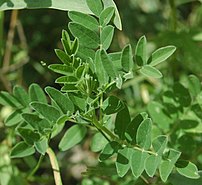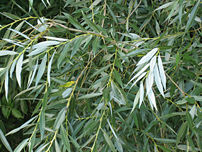[amazon_link asins=’B01IIOOD48,B075PTL19Q,B074WC7RJW,B00FK3WRR6,B007AJT1TA,B074S66ZTG’ template=’ProductCarousel’ store=’finmeacur-20′ marketplace=’US’ link_id=’85b414b1-bebc-11e7-8df0-01a6a33c0cf3′]
Bnical Name :Rhamnus cathartica
Kingdom: Plantae
Division: Magnoliophyta
Class: Magnoliopsida
Order: Rosales
Family: Rhamnaceae
Genus: Rhamnus
Subgenus: Frangula
Synonyms : Cervispina cathartica (L.) Moench, Frangula purshiana, Rhamnus purshianus
Common Name: Cascara Buckthorn, Cascara, Bearberry, and in the Chinook Jargon, Chittam or Chitticum; Common Buckthorn
Habitat: Cascara sagrada is native to Europe, including Britain, from Scandanavia south and east to N. Africa and W. Asia. It grows in fen peat, scrub, hedges, ash and oak woods, on calcareous often dry soils.
Parts Used:Dried aged bark
Description:
Cascara sagrada is a small deciduous tree that grows from 15-20 feet in height. It has pubescent stems covered with reddish-brown bark and often gray lichen. The tree bears dark green elliptic to oblong-ovate leaves with prominent veins and toothed margins. The leaves are rounded at the base and have somewhat hairy undersides. Short-stemmed clusters of small, greenish-white flowers grow from the upper leaf axils; they eventually produce black, pea-sized drupes that are poisonous.
The bark is brownish to silver-grey with light splotching. The leaves are deciduous, alternate, clustered near the ends of twigs; they are oval, 5–15 cm long and 2–5 cm broad with a 0.6–2 cm petiole, dark shiny green on top, fuzzy and paler green below. The flowers are tiny, 4–5 mm diameter, with five greenish yellow petals; the flowering season is brief, disappearing by early summer. The fruit is a berry 6–10 mm diameter, bright red at first, quickly maturing deep purple or black, and containing three seeds.
It grows in moist, acidic soils in the shady side of clearings or in the marginal forest understory, near the edges of mixed deciduous-coniferous forests. It typically grows as a second-generation tree after alders have colonized a barren plot of land.
Cultivation:
Succeeds in any reasonably good soil. Prefers a dry or moist calcareous soil in sun or light dappled shade. This species is hardy to at least -15°c. Plants regenerate well after cutting or burning but young plants are rather prone to frost damage when grown in an exposed position. Plants are resistant to cattle grazing but young plants can be damaged by rabbits. Plants have a very shallow root system. This species often bears the aecidospore stage of ‘crown rust’ of oats so it should not be grown near cereals. The species in this genus are notably resistant to honey fungus. A good bee plant and a main food plant for the brimstone butterfly. Dioecious. Male and female plants must be grown if seed is required.
Propagation :
Seed – best sown as soon as it is ripe in the autumn in a cold frame. Stored seed will require 1 – 2 months stratification at 5°c and should be sown as early in the year as possible in a cold frame. Prick out the seedlings into individual pots when they are large enough to handle, and grow them on in the greenhouse or cold frame for their first winter. Plant them out in late spring or early summer of the following year. Cuttings of half-ripe wood, July/August in a frame. Cuttings of mature wood of the current year’s growth, autumn in a frame. Layering in early spring.
Medicinal Uses:Constipation, Colon Disorders, Liver Problems, Poor Digestion, Colitis, Hemorrhoids, Skin Problems.
The dried, aged bark of this tree has been used continually for at least 1,000 years by both native and immigrant Americans as a laxative natural medicine, commercially called “Cascara Sagrada“, but old timers call it “chitticum bark”.
Cascara is a very effective laxative, containing hydroxymethyl anthraquinones that cause peristalsis of the large intestine, emodin and other rhamnoid glycosides. It has been used as such by many First Nations groups. For example, Cascara bark tea was drunk as a laxative by Nuxalk, Coast Salish, Nuu-chah-hulth, and Kwakwakawakw, and a decoction of the inner bark and water was used as a remedy for dysentery. The bark is often aged before use so it will be less likely to cause nausea. First introduced to Europe in 1877, about 3 million pounds of the bark is harvested annually for use in commercial laxatives. Squaxin used a Cascara infusion to wash sores–sometimes people chewed the bark and then spit it on sores. The bark has also been used to treat heart strain, internal strains, and biliousness. Skagit people burn the bark and mix the charcoal with grease to rub on swellings, and also have employed the bark in a green dye for mountain goat wool. Makah eat the fresh berries in July and August. Internally used for chronic constipation, colitis, digestive complaints, hemorrhoids, liver problems, and jaundice. It is a medium-strength laxative and somewhat weaker than Rhubarb root and Senna leaf. Externally used to deter nail biting.
Cascara Sagrada means “sacred bark” in Spanish. The much more pertinent name chitticum means “shit come” in Chinook Jargon; chittam comes from the Chinook Jargon phrase chittam stick = “laxative tree” which is similarly from the English word “shit”.
The bark is harvested mostly from wild trees; over-harvesting in the middle 1900s eliminated mature trees near many settled areas. Once stripped from the tree, the bark is aged for about 1 year to make its effect milder. Fresh cut, dried bark causes vomiting and violent diarrhea.
Short term side effects of Cascara Sagrada herb:
A medline search did not reveal any significant short term cascara sagrada side effects as long as it is not used for more than a week or two at a time without a break. It is best to avoid cascara sagrada if you have a chronic intestinal condition such as ulcerative colitis, or diverticular disease.
Long term cascara sagrada side effects:
When cascara sagrada or other anthraquinone containing plants are used for prolonged periods, potentially serious side effects can occur. These cascara sagrada side effects may include cramping in the abdomen and loss of body fluids. Dark pigmentation in the colon can occur and this is called melanosis coli.
Cascara Sagrada Research Update:
Colon cleansing regimens. A clinical study in 1200 patients.
Gastrointest Radiol. 1982;7(4):383-9
The purgative effect of bisacodyl, anthraquinone glycosides ( Cascara sagrada ), and sodium picosulfate, alone or in combination with a saline purge and a tap water enema, was studied in 1200 patients. The cleansing effect was scored with regard to retained fecal residue evident on double-contrast studies of the colon. The combination of a contact laxative and a saline purge produced good cleansing effect in 52%-80% of the patients. With an additional tap water enema given 1 hour before the colon examination, however, 96% of the colons were clean. The taste and the effects of the cleansing systems were tolerated favorably by more than 90% of the patients. However, 17% reported restriction in work capacity on the day of bowel cleansing.
Other Uses:
Dye; Hedge; Hedge; Wood.
A green dye is obtained from the immature fruit. Mixed with gum arabic and limewater, it makes a green pigment used in watercolour painting. Yellow, orange and brownish dyes can also be obtained. The colours are rich but fugitive. A yellow dye is obtained from the bark. It has been used to colour paper and maps. Often grown as an informal hedge, it is also amenable to trimming. Wood – hard, handsome with a marble-like grain. Used for small turnery.
Known Hazards: The fruit is purgative but not seriously poisonous. Other parts of the plant may also be poisonous. Adverse effects: Diarrhoea, weakness. Urine may turn dark yellow or red which is harmless. Possible body potassium loss if used for more than 10 consecutive days
Disclaimer:
The information presented herein is intended for educational purposes only. Individual results may vary, and before using any supplements, it is always advisable to consult with your own health care provider.
Resources:
http://en.wikipedia.org/wiki/Rhamnus_purshiana
http://www.raysahelian.com/cascarasagrada.html
http://www.springboard4health.com/notebook/herbs_cascara_sagrada.html
http://www.pfaf.org/user/Plant.aspx?LatinName=Rhamnus+cathartica


































![Reblog this post [with Zemanta]](https://i0.wp.com/img.zemanta.com/reblog_e.png?w=580)